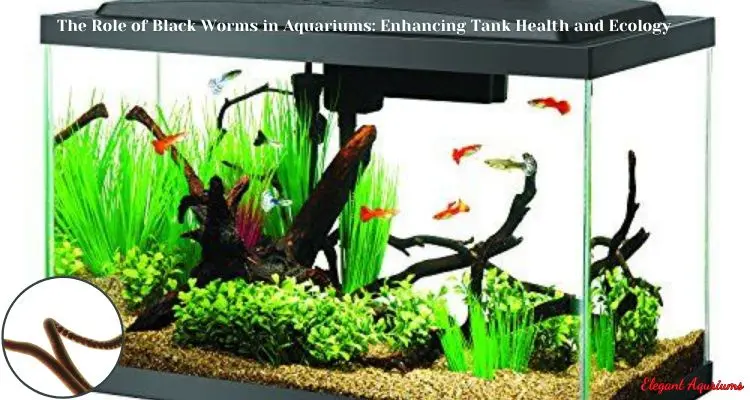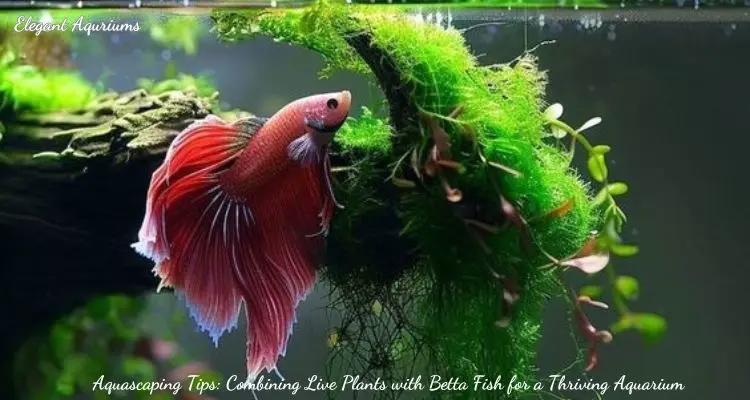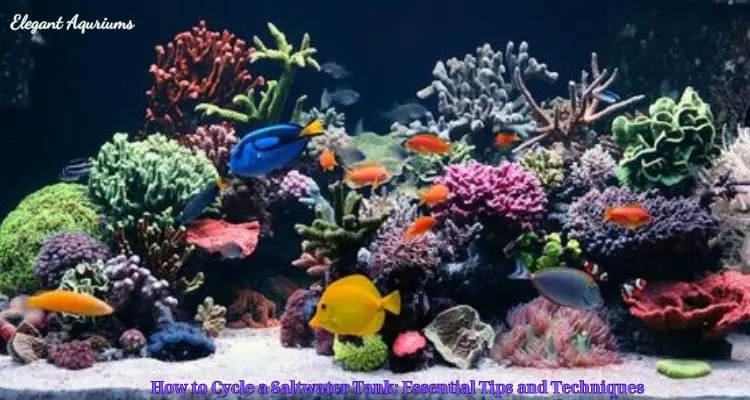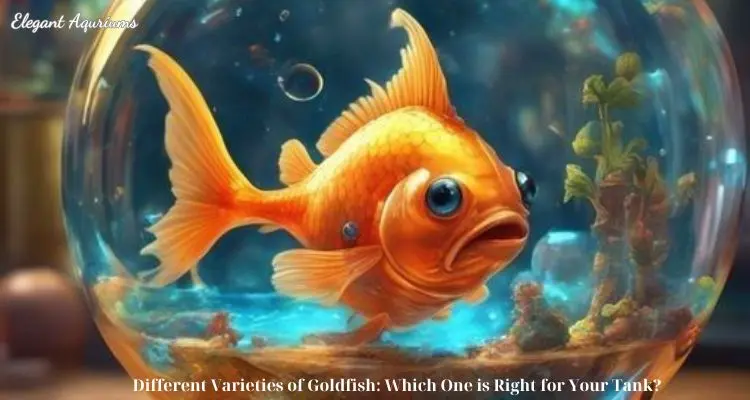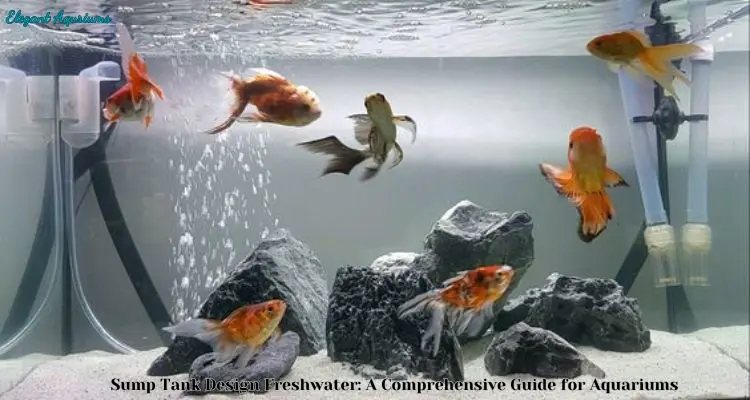Aquarium accessories and decorations
The Role of Black Worms in Aquariums: Enhancing Tank Health and Ecology
Aquarium enthusiasts constantly seek ways to optimize the health and balance of their aquatic environments. One often overlooked but beneficial addition to many aquariums is the black worm (Lumbriculus variegatus). These small, segmented worms offer a range of benefits that enhance tank health and contribute to a thriving aquarium ecosystem. Elegant Aquriums will explores the multifaceted role of black worms in aquariums, how they benefit tank health and ecology, and tips for their effective management.
Introduction to Black Worms
What Are Black Worms?
Black worms, also known as California black worms, are freshwater annelids commonly found in the sediment of ponds, marshes, and slow-moving streams. They are characterized by their long, slimy, and segmented bodies, typically ranging from 1 to 4 inches in length. Black worms are often used as live food in aquariums and are valued for their high nutritional content and ecological benefits.
Physical Characteristics
- Appearance: Black worms are distinguished by their dark coloration, which can appear almost black. Their slimy texture and segmented bodies make them highly adaptable to various environments.
- Behavior: These worms are burrowers, spending much of their time in the substrate or hiding among aquatic plants. They surface occasionally to feed and reproduce, making them relatively low-maintenance compared to other live foods.
Benefits of Black Worms in Aquariums

Nutritional Value
Black worms are highly regarded for their nutritional benefits:
- High Protein Content: They are rich in protein, which is essential for the growth and maintenance of fish. Protein is crucial for the development of muscle tissue and overall vitality, especially for juvenile and growing fish.
- Essential Fatty Acids: Black worms provide essential fatty acids, including omega-3 and omega-6, which support healthy immune function, improve fish coloration, and enhance overall health.
- Natural Behavior Simulation: Feeding live black worms encourages natural hunting and foraging behaviors in fish. This stimulation can reduce stress and contribute to a more active and healthier fish.
Contribution to Tank Health
In addition to their nutritional value, black worms play several key roles in maintaining tank health:
- Waste Breakdown: Black worms feed on organic matter such as detritus and decomposing plant material. By consuming this waste, they help break it down and prevent the accumulation of harmful substances in the tank.
- Aeration of Substrate: Their burrowing activity helps to aerate the substrate, improving oxygen flow and reducing the risk of anaerobic conditions. This aeration is beneficial for the overall health of the tank’s ecosystem.
- Reduction of Algae Growth: By consuming detritus and decomposing matter, black worms help limit the availability of nutrients that algae thrive on. This can contribute to reduced algae growth and a cleaner tank environment.
Enhancing Tank Ecology
Integrating black worms into your aquarium can positively impact the overall ecology:
- Support for Beneficial Microorganisms: Black worms serve as a food source for various microorganisms and invertebrates in the tank. Their presence supports a balanced and diverse ecosystem by contributing to the food web.
- Promotion of Biodiversity: By providing a food source for microorganisms and invertebrates, black worms help to promote biodiversity in the tank. This increased diversity can enhance the tank’s biological filtration and stability.
Setting Up and Maintaining Black Worms in Your Aquarium
Tank Requirements
To successfully keep black worms in your aquarium, specific conditions need to be met:
- Substrate: A soft, sandy, or fine gravel substrate is ideal for black worms. This type of substrate allows them to burrow and thrive without causing harm to their delicate bodies. Coarse substrates should be avoided as they can damage the worms.
- Water Quality: Maintaining excellent water quality is crucial. Black worms are sensitive to poor water conditions, so regular water changes and efficient filtration are necessary to ensure a healthy environment.
- Temperature: Black worms prefer a temperature range of 60-75°F (15-24°C). Extreme temperatures can stress or kill the worms, so maintaining a stable temperature is important for their well-being.
Feeding Black Worms
Black worms can be fed a variety of foods:
- Organic Matter: In their natural habitat, black worms feed on organic detritus and decomposing matter. In an aquarium setting, they can be supplemented with sinking pellets or finely chopped vegetables to ensure they receive a balanced diet.
- Commercial Foods: Specialized foods for black worms are available at some aquarium stores. These foods are formulated to meet their nutritional needs and promote healthy growth.
Breeding Black Worms
Black worms can reproduce rapidly under favorable conditions:
- Breeding Conditions: Ensure that the tank environment is stable, with adequate food and proper water quality. Black worms will naturally reproduce if conditions are favorable, contributing to their population growth.
- Harvesting: To manage their population, you may need to periodically harvest excess worms. Use a fine net or siphon to collect them from the substrate, ensuring you do not disrupt the tank’s balance.
Integrating Black Worms with Other Tank Inhabitants
Compatibility with Fish
Most freshwater fish species can safely consume black worms:
- Suitable Species: Small to medium-sized fish, such as tetras, guppies, and cichlids, benefit from the addition of black worms to their diet. They provide a nutritious supplement that can enhance their overall health.
- Feeding Practices: Offer black worms as a treat or supplement to their regular diet. Monitor the fish to ensure they do not overconsume and maintain a balanced feeding schedule.
Interactions with Invertebrates
Black worms generally coexist well with other invertebrates:
- Invertebrate Tank Mates: Snails, shrimp, and other invertebrates can thrive alongside black worms. Their presence can provide additional food sources and contribute to a balanced tank ecosystem.
- Pest Management: Monitor interactions between black worms and other tank inhabitants. Ensure that the worms do not negatively impact the feeding habits or habitats of other species.
Troubleshooting Common Issues
Overpopulation
Black worms can multiply quickly, leading to overpopulation issues:
- Management: Regularly monitor worm numbers and adjust feeding practices to control their population. Harvest excess worms as needed to prevent overcrowding.
- Preventive Measures: Avoid overstocking the tank with black worms and maintain proper substrate and water conditions to manage their growth.
Health Concerns
Black worms may experience health issues if conditions are not ideal:
- Signs of Stress: Look for signs such as abnormal behavior, discolored or damaged worms, which can indicate poor water quality or other issues.
- Treatment: Address underlying problems with water quality or tank conditions. Perform regular maintenance and water changes to promote a healthy environment for the worms.
Compatibility Issues
Ensure that black worms do not negatively impact other tank inhabitants:
- Observation: Monitor interactions between black worms and other species. Ensure there is no aggressive behavior or competition for resources.
- Adjustment: If compatibility issues arise, consider separating black worms or adjusting tank conditions to address the problem.
Practical Tips for Managing Black Worms in Your Aquarium
To ensure the successful integration and management of black worms in your aquarium, consider the following practical tips:
Monitoring and Maintenance
- Regular Checks: Routinely inspect the black worms and their environment. Look for signs of overpopulation, poor health, or environmental issues.
- Water Quality Testing: Regularly test the water for parameters such as ammonia, nitrites, nitrates, and pH levels. Keeping these parameters within optimal ranges is crucial for the health of both the worms and the aquarium’s ecosystem.
Feeding Practices
- Balanced Diet: Provide a varied diet for the black worms to ensure they receive all necessary nutrients. This can include sinking pellets, finely chopped vegetables, and other appropriate foods.
- Feeding Schedule: Feed black worms in small amounts to prevent overfeeding and maintain a clean tank environment. Monitor how much they consume to avoid excess waste and potential water quality issues.
Handling and Harvesting
- Gentle Handling: Use a fine net or siphon to harvest black worms gently to avoid causing stress or damage to them.
- Harvesting Frequency: Adjust harvesting frequency based on worm population and tank needs. Regular harvesting helps manage worm numbers and prevents overcrowding.
Enhancing Tank Environment
- Substrate Management: Ensure that the substrate is suitable for black worms. Regularly clean the substrate and avoid using coarse materials that could harm the worms.
- Tank Setup: Create a balanced and stimulating environment for black worms by incorporating plants, hiding spots, and a variety of substrates. This setup helps maintain a healthy and engaging habitat.
Conclusion
Black worms play a vital role in enhancing aquarium health and ecology. They provide significant nutritional benefits for fish, contribute to waste breakdown and substrate aeration, and support a balanced and diverse tank ecosystem. By understanding their needs and integrating them properly into your aquarium setup, you can maximize their benefits and ensure a thriving aquatic environment.
Incorporating black worms into your tank can improve the overall health and beauty of your aquatic habitat. Proper care, monitoring, and management will help you create an optimal environment for both the worms and your other tank inhabitants. Whether you are a seasoned aquarist or a beginner, black worms offer a valuable addition to your aquarium, contributing to a healthier, more balanced ecosystem.

